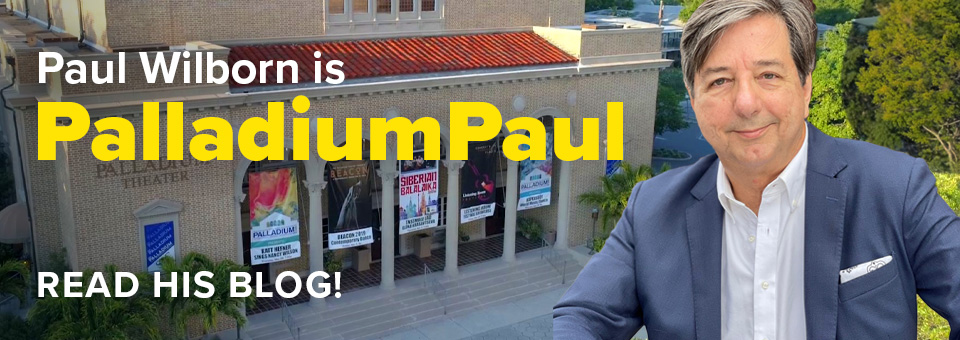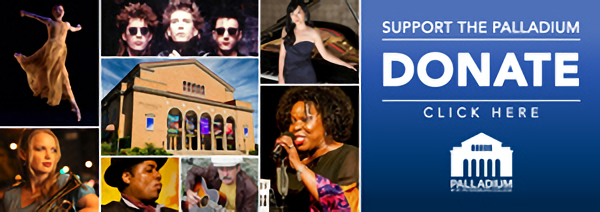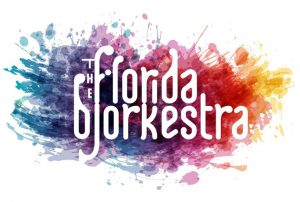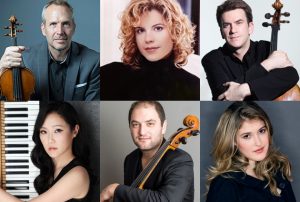After a stunning performance on March 14, Our Palladium Chamber Series returns on Wednesday, March 28, with another very special program.
Jeewon Park will be performing Bach’s Goldberg Variations and Jeewon, Jeff Multer and special guest Julian Schwarz, will play the Brahms’ Piano Trio No. 1 in the second part of the program. We’ll be celebrating afterwards in the Side Door with the players. Those post-show parties feature coffee and great desserts freshly made by our Palladium Chamber Series season supporter, The Princess Martha, a senior residence in downtown St. Petersburg.
For tickets and more information call our box office at 727-822-3590 or follow this link for on-line tickets.
Kurt Loft is again providing program notes for this concert. They will be inserted in the program, but you can read it early right now:
Palladium Chamber Series, 3-28-18
Program Notes By KURT LOFT
Sitting alone on stage at the Palladium Theater, without a safety net or backup plan, Jeewon Park will have her fingers full. On March 28, the South Korean pianist performs a monument of music that can be all-consuming for both performer and listener: Johann Sebastian Bach’s Goldberg Variations.
No, it’s not epic like the Rachmaninoff Third Piano Concerto or a late Beethoven sonata, but it stands on its own in the way Bach weaves a simple idea into a tapestry, into what some have called a Rubik’s cube of musical invention.
“I always feel it’s worthwhile to perform,’’ said Park, who appears as part of the Palladium Chamber Players concert series. “It’s important for listeners to visit this special place in music. It’s a journey.’’
 Park also will perform the Trio No. 1, Op. 8 by Johannes Brahms, alongside two of her Palladium colleagues, violinist Jeffrey Multer and cellist Julian Schwarz.
Park also will perform the Trio No. 1, Op. 8 by Johannes Brahms, alongside two of her Palladium colleagues, violinist Jeffrey Multer and cellist Julian Schwarz.
The Goldbergs – as they are called for short – are a sui generis masterpiece of the variation form. The music begins with a tranquil, unassuming tune, and then traverses a labyrinth of twists and turns that are as pleasing to the ear as they are logical to the mind.
“Bach created the most glorious, elegant aria, and from there did these 30 variations with mathematical perfection,” Park said. “I don’t know how he did it.’’
Bach composed the work in 1742, allegedly for a harpsichordist named Johann Gottlieb Goldberg, who was the private musician for a Russian ambassador to the Dresden court. As the story goes, the ambassador had insomnia, and wanted music to help him drift off to sleep. If anything, the Goldbergs have the opposite effect on Park.
“The first time I played the piece on the piano I was almost losing sleep over it,’’ she said. “On the (two manual) harpsichord, Bach has both hands crossing each other, and if you’re not careful on the piano your hands can crash into each other. It’s very difficult because you have to work hard to bring out three or four or five voices in canon, not to mention just memorizing everything. It’s a good piece for one’s aging brain.’’
Playing the Goldbergs also can be daunting because of its sheer length. Performers observing all the repeated phrases can clock in at 75 or 80 minutes. In his acclaimed 1955 recording, the Canadian pianist Glenn Gould wrapped things up in less than 40 minutes. Park will find a middle ground.
“Each variation comes with repeats and it’s up to the performer to choose what repetitions to take,’’ she said. “That’s something I’m still trying to figure out. I think I’m just going to take repeats that are more meaningful than others, and be finished in under an hour.’’
The second half of tonight’s program also features a single work with the Brahms B Major Trio, a piece with an interesting history. It was the earliest composition by Brahms to survive – he was extremely critical of his work and destroyed numerous drafts – and one that enjoyed a second life. Brahms completed the Trio in 1854, when he was barely 21 years old, and jumped at the chance to revise it 36 years later when the publisher sold the rights to the piece.
The 1890 version, which will be played tonight, is much more taut ─ Brahms trimmed the final movement from 518 to 322 bars ─ and about a third trimmer than the original.
The Trio offers a rare glimpse of a youthful and mature composer in a single work, and reveals much about how Brahms’s compositional technique evolved over the years. It also shows him writing with an almost symphonic sweep, full of soaring themes, complex harmonies, and a battle between major and minor keys that typically involves larger forces.
Stately themes grow throughout the huge sonata-scale opening movement, and shards of drama continually interrupt the music’s placid undercurrents. A short scherzo follows, offering relief in the form of a waltz, and leads into a pensive adagio that hovers over listeners like a hymn. In this hushed third movement, the cello – a favorite instrument of Brahms – takes center stage with warm, ingratiating themes and singing phrases.
Against agitated chords from the piano, the cello introduces the final movement, followed by an optimistic second theme that allows all three instruments to play in a free, unrestricted style. The Trio concludes –unresolved – in the anxious key of B minor.








Leave a Reply